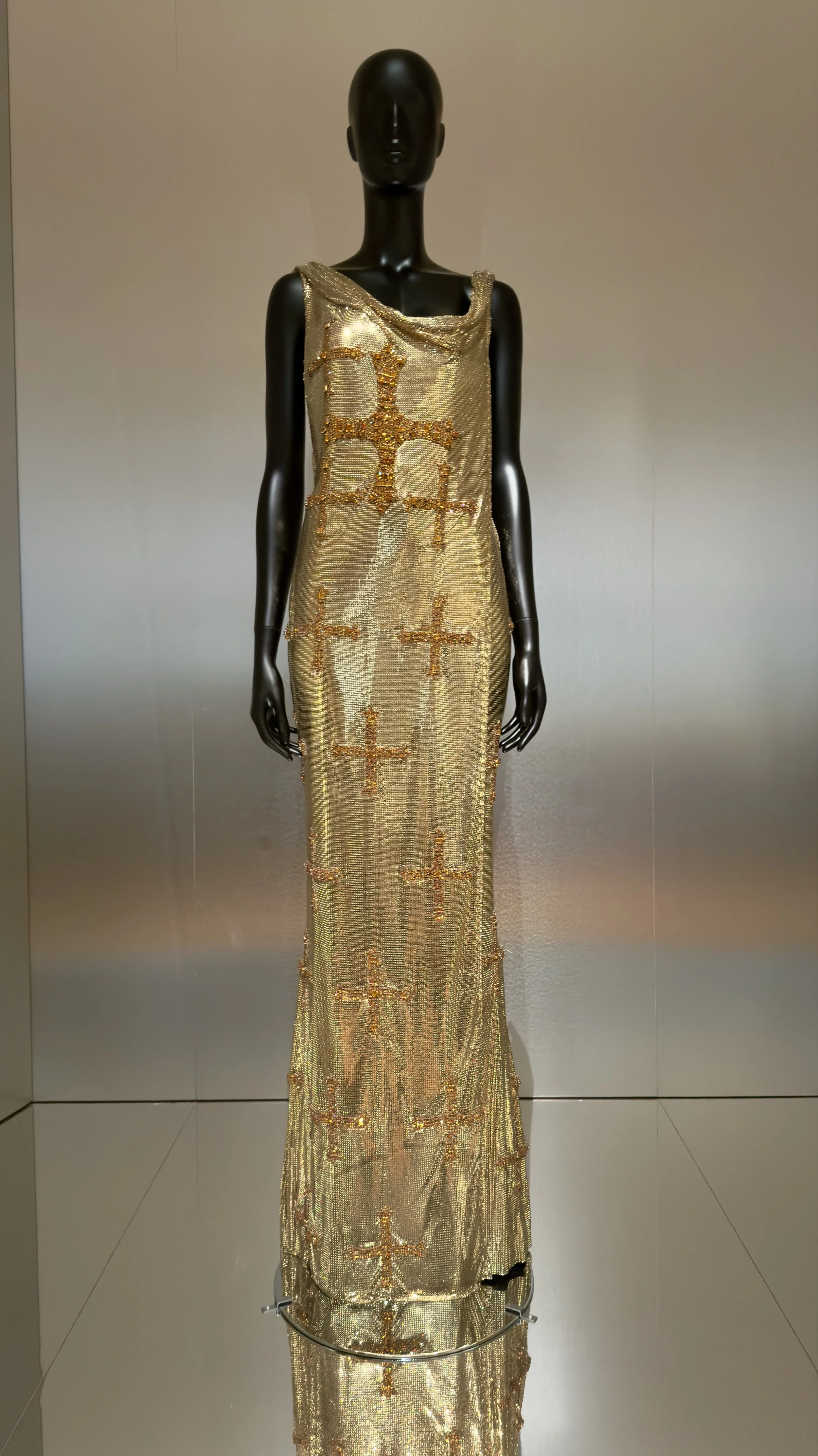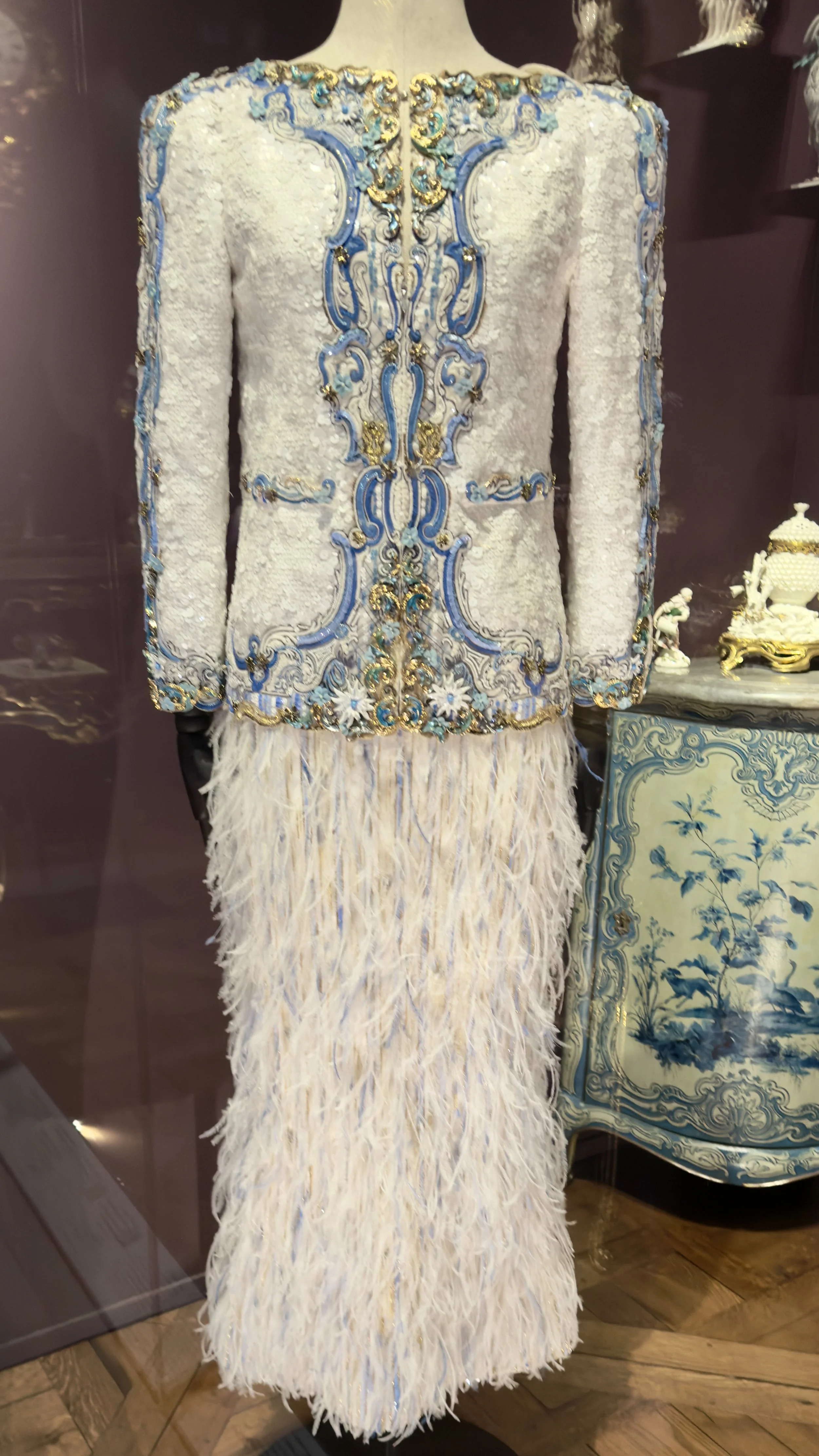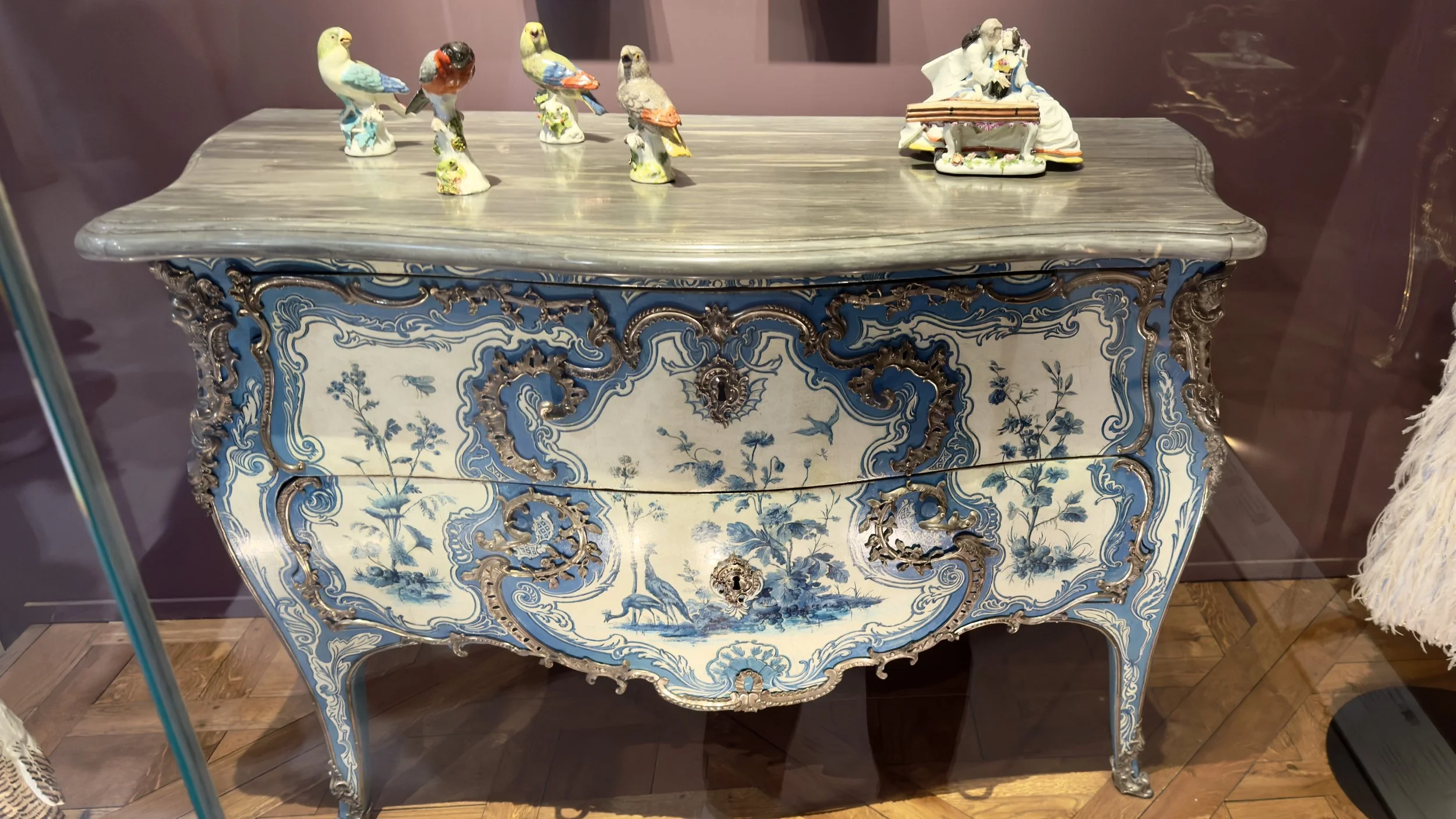Louvre Couture
An Exhibition Tailor-Made for Art Historians, Fashion Lovers, and Everyone in Between
I can’t get enough of Louvre Couture. I’ve been three times now, and I'll certainly be back again before I leave Paris. I can (and will, ask my friends) talk forever about this exhibition, so I invite you to explore it with me and uncover the genius that is Louvre Couture.
Versace
1997-1998
Reliquary
1160-1170
I’ll get right to the heart of it- this exhibition is so incredibly effective because it makes relatively obscure art feel relevant. Most people visit the Louvre for Mona Lisa, or maybe some of the other Great Masters or particularly impressive ancient sculptures. Not many people bother with the medieval artifacts tucked way off in the Richelieu Wing. These are relics of a world so different from our own, without the prestige of the Roman Empire or the Renaissance to boost their popularity with the modern tourist. In a world where art museum attendance is dropping and less people are bothering to learn art history, it’s easy to think of many of these objects as… irrelevant.
Yves Saint Laurent
1997-1998
Crown Reliquary
1260-1280
Louvre Couture brilliantly refutes this idea. It doesn’t give you a lecture about it, or send you through hallway after hallway of text-covered walls explaining the significance of everything in the collection. Instead, it provides example after example of how the objects and aesthetics of the past inspire the biggest names in fashion today. These were three of my favorites from the beginning of the exhibition. The Versace dress cites the 1997 Glory of Byzantium exhibition at The Met as it’s inspiration, the Dolce & Gabbana pulls from 12th & 13th century mosaics found in the Monreale Cathedral near Palermo, and the Yves Saint Laurent appears to be influenced by precious objects, particularly crowns, from the Gothic era.
Dolce & Gabbana
2013-2014
Mosaic Fragment
12th Century
Flemish Tapestry
15th Century
Unsurprisingly, textile art, like tapestries and real medieval fashion, provide all kinds of inspiration. We see it in the fabric choices throughout the exhibition, but also in the patterns and silhouettes. This Christian Dior gown incorporates the mille fleurs (thousand flowers) design that was popular in tapestries. Mille fleurs refers to the background of small pants, usually flowers, that appear as if they’re growing from the surrounding green grass. Forest animals and hunting dogs are also included.
One of my favorite pieces in the entire exhibition was this Chanel dress, placed so strategically in front of the 15th century The Month of December tapestry. Not only are the fabrics and colors so reminiscent of the surrounding wall hangings, but the silhouette of the dress is a near perfect match to the clothing worn by the rider on the horse behind it.
Chanel 2013
The Month of December 1531-1533
Christian Dior
2017-2018
Alaïa
2017-2018
Mugler
1995-1996
Next is the armor court, where I really think the designs speak for themselves. Surrounded by suits of armor, gem-encrusted swords, painted shields, and elaborately decorated breastplates, it’s almost hard to tell what’s medieval and what’s contemporary.
Mugler 1995-1996
16th & 17th Century Clocks
Azzedine Alaïa was a frequent visitor to the Louvre, and despite the fact that the Egyptian collection is cited as the inspiration for this gown, I find it to be reminiscent of chainmail as well. Mugler was the star of the show here, with pieces that practically blend into the permanent collection. While the Balenciaga and Paco Rabanne pieces can certainly hold their own, the quotes from the designers about the pieces make their inclusion all the more relevant. Paco Rabanne said of his metallic piece “My designs are weapons” and compares the sound of fastening the garment to a revolver. Demna, the designer behind the Balenciaga gown, speaks to the craft itself, saying “Making clothes is my armor.”
Balenciaga
2024-2024
Paco Rabanne
1967-1968
Chanel
2019
Versace 2002-2003
Armchairs 1777
The exhibition doesn’t limit itself to only medieval influences. It also spans the Napoleonic Apartments and rooms containing objects belonging to Marie Antoinette. The Rococo aesthetic associated with Marie Antionette and the royal court of her time was highly ornamental, exemplified here in this 18th century furniture. Karl Lagerfeld drew directly from this chest of drawers for the Chanel jacket, using everything from the colors to the animal motifs to the distinctive Rococo swirls. Donatella Versace’s strapless dress in also a clear interpretation of these 18th century armchairs, with the lace on the hem mirroring the drapery on the bottom of the chairs.
Chest of Drawers
1743
I’ll even go as far as to say that this exhibition gave me a new appreciation for modern art. I’ve been to several modern art museums (including several of the most prestigious ones like the MoMa, the Hirshhorn, and Tate Modern) and I’ve tried to ‘get’ it the way that I get the Old Masters. I have a lot of feelings about modern art that I’m certain I’ll write about eventually but the TLDR is that 1) I think that we, as a society, place less value on traditional art and it shows. And 2) I don’t like it.
However, post-Louvre Couture, I’m starting to wonder if maybe I’ve been looking in the wrong place. The garments and accessories on display are most certainly art, and I was absolutely captivated.
I kicked off this article by discussing how Louvre Couture helps modern audiences connect with outdated, distant-feeling works that they struggle to understand. I feel I moved the opposite way. After hundreds of art museum visits, Louvre Couture opened my eyes to the world beyond the Old Masters, and I’m grateful for it. Art History isn’t a thing of the past, but rather an ongoing exploration into human creativity. It’s meant for everyone, not just stuffy academics, and Louvre Couture does an excellent job of bringing the fun into it and making the antiquated feel incredibly relevant.
Schiaparelli
2022
Christian Dior
2006-2007
If you couldn’t tell, I highly recommend trying to catch this exhibition before it closes on August 24th, 2025, This isn’t one to miss.


















